Business
My European Favourites: Český Krumlov
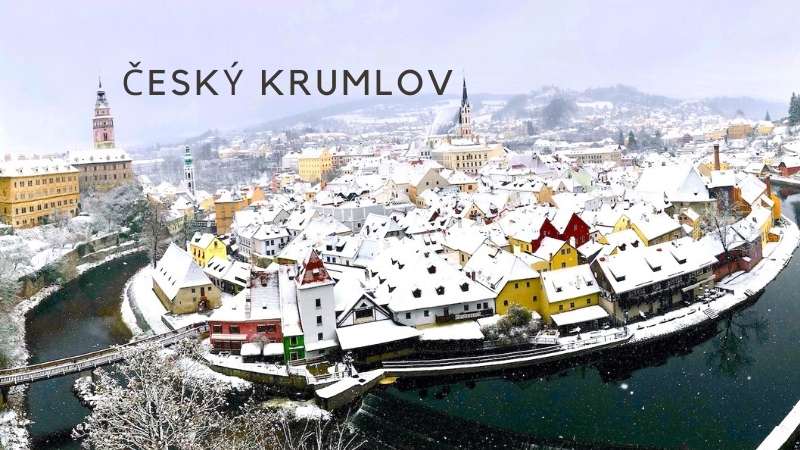
Český Krumlov is the most picturesque medieval town in the Czech Republic, and one of the best small town destinations in Central Europe. Český Krumlov is located in the South Bohemia Region of the Czech Republic about a two hour drive directly south from Prague and only thirty minutes from the nearby city of Ceske Budejovice. It is only about thirty kilometers from the Austrian border, and Linz is only an hour away. It is a natural stop from Prague to Salzburg, and we frequently stay in Ceske Budejovice, where many of our hockey groups play games or train at former NHL and Czech hockey star, Jaroslav Pouzar’s arena.
Český Krumlov’s old town, a UNESCO World Heritage Site, is nestled in between a meandering river and is surrounded by lush green hills and a towering castle above. With narrow cobblestone streets and a mixture of baroque and renaissance architecture, this could be the backdrop to any fairytale.
After we enter the town, we will park our bus across the street from a little park, called the Deer Garden, that is dwarfed by the back side of the Český Krumlov Castle. To get up to the castle, there is a path at an incline just on the right of the park or there are stairs up to the castle located at the back right of the park.
Once you reach the top, on the right you will find the eleven hectare castle garden. The garden includes a cascade fountain, an outdoor amphitheatre with a revolving auditorium, the Bellaria summer palace and the castle’s winter riding hall, which is now used to host special events.
If we go left instead of going into the park, a few steps away is a small gated entrance to a terrace that you should not miss. The terrace offers a spectacular panorama of the river, the town below, the castle on the left and the surrounding area. Your camera will be busy here and, at times, you will have numerous people jockeying for position to get that perfect shot. Please note that the terrace is not always open in the evening.

Cesky Krumlov Castle from the photo terrace and from the Lavka pod Zamkem wooden bridge.
Český Krumlov Castle
The Český Krumlov Castle dates back to 1240 when it was built by the Witigonen (Vitkovci) dynasty. In 1302, the Rosenberg dynasty became owners of the castle, and you will see their family’s five petalled rose logo at various locations throughout the city. In 1622, the castle was transferred to the Austrian Eggenberg family who expanded the castle, including adding the unique baroque theatre that bears their name. Today, the local brewery in Český Krumlov is named after the Eggenbergs. The Schwarzenberg family took over the castle from 1719 until 1947 when it was transferred to the Czechoslovak state. The castle complex, with five courtyards, is listed as a Czech National Monument and is listed on the UNESCO World Heritage List.
What would an old castle be without a good ghost story? In medieval times, the appearance of a White Lady during the day or night was an omen that someone in the family would soon die. At the Český Krumlov Castle, legend has it that the castle is haunted by their own White Lady, Perchta of Rosenberg. Her husband treated her poorly and on his death bed he asked her for forgiveness. She refused and her husband cursed her. Since her death, her ghost has haunted her former husband’s estates including the castle.

Cloak bridge, entrance into the 4th courtyard and frescoes on the courtyard walls.
When we leave the photo terrace, we cross the fifth castle courtyard surrounded by the baroque castle theatre and the renaissance house to the white and grey Cloak Bridge. The bridge, which offers more great views of the old town and river, has three stories above the arched walkway that connect the castle to the theatre.
Entering the area called the Upper Castle, we pass through two small courtyards, named the fourth and third castle courtyards. The courtyards’ facades were painted in the 16th and 17th centuries. The frescoes painted on flat walls use the “trompe–l’oeil” technique to create the optical illusion that the walls are three-dimensional brick with intricate stone decorations and inlayed statues. The “Upper Castle’s” renaissance interiors are palatial with an important collection of paintings, tapestries and furniture. The castle’s underground foundations, called the Wenceslas Cellars, are a labyrinth of pillars and arches. Exiting the third courtyard, we go down a steep and windy passage way, which may have been used for vehicles.

A sundial, the second courtyard fountain and tower. The first courtyard and the red gate.
Arriving at the second castle courtyard, we find the Burgrave’s house from 1578. The Burgrave, or “Count”, was the governor of the town, with judicial and military powers bestowed on him by the Holy Roman Emperor. From 1742-1948, the lower floor of the Burgrave’s house was used to house the Schwarzenberg grenadier guard.
The courtyard has a stone fountain from 1641 in the middle and the colorful castle tower in the corner. The tower and the adjoining “Hradek” building are the two oldest parts of the castle. If you climb the tower, you will get amazing views of the castle and the town.

The castle Bear Moat with bears enjoying bread, vegetables, apples and watermelon snacks.
To access the first courtyard, we cross a small bridge that has a Bear Moat below. There have been bears in the moat since 1707, and most times we can see them walking around or eating their vegetables and fruit. Unfortunately, we don’t always see them as they like the area under the bridge. This is the largest courtyard and was used as an agricultural area and animal enclosure. We leave the castle through the Red Gate and continue until we reach the Latrán street where we turn right. A few meters away on your left is the entrance to the Monastery.
Monastery of the Minorites
After the castle, the monastery is the second largest historic complex in Český Krumlov. The medieval monastery was founded for the brothers and sisters of the order of St. Francis of Assisi in 1350. St. Francis gave the name “Friar Minor” or “Minorites” to the Franciscans. The order of St. Clare, “Poor Claires” or the “Clarissas,” is the name of the female branch of the Franciscans. The monastery church located in the center of the complex separates the convents of the Minorites (here from 1357-1950) and Clarissas (here from 1361-1782).

The Latrán street, a Trdelník vendor and the crucifix on Lazebnicky bridge.
Latrán Street and Lazebnicky Most
The renaissance area just outside the castle and across the river from the old town center was once the home of castle servants. Today the cobble stone Latrán Street’s colorful houses are full of shops, cafes, restaurants and artist galleries. Just off the Latrán, you will find artist workshops featuring paintings, iron works, statues and furniture. Some of these artist workshops are decorated with interesting murals.
Undoubtably, you will be hit by the sweet aroma of the chimney cake or Trdelník. The Trdelník is a rolled dough which is wrapped around a thick spit, baked over hot coals and topped with sugar, walnuts and sometimes cinnamon. You can find variations of this treat throughout the Czech Republic, Slovakia and Hungary.
Connecting the Latrán street to the old town is the wooden Lazebnicky bridge with a large crucifix in the middle. Form the bridge, you have a magnificent view of the castle above, the Vltava river meandering its way around the town, and the riverfront houses and restaurant patios of the old town.

The Český Krumlov old town square with the Marian Plague column and city hall.
Historic Old Town
Once you cross the bridge, if you go forward on the Radniční street for about a hundred meters you will arrive at the Town Square. Instead, we will turn right and take the curved Dlouhá Street with interesting cafes, restaurants and hotels. At the end of the Dlouhá street, we arrive at the Široká street. Turning right we will come to the old mill where we can see the waterwheel still turning and we get another great view of the castle. We continue in the other direction leisurely making our way down the wide and vibrant Široká street until we reach a junction where three streets meet. This is a very picturesque little square with colorful buildings decorated with frescoes.
Only a few meters away from this junction, we find ourselves in the Český Krumlov town square or Náměstí Svornosti. The square has served not only as a market in medieval times, but also as a place of execution. The large white building with renaissance arcades is the 16th century Český Krumlov Town Hall. The four coats-of-arms painted on the façade of the building are those of the Eggenbergs, the Schwarzenbergs, the town and of the Czech state of Bohemia. Like many towns in the Czech Republic, the square has a Marian Plague Column with a fountain at the center. The plague columns give thanks to the Virgin Mary for the end of the plague that killed many throughout Europe in the 17th century. The beautiful buildings adorned with stucco decorations and frescoes around the square once belonged to the town’s upper class and have been restored to their original splendor.

The St. Vitus church from the river, the old town’s Široká street and the three street junction.
Church of St. Vitus
From the town square you will see the 19th century spire and tall roof of the Roman Catholic church of St. Vitus. A short climb up Horní Ulice street you will reach the church entrance. The gothic church has a white interior with an impressive vaulted ceiling supported by stone columns. The tall but clear gothic windows allow light to flood the nave and they push your eyes upwards to the magnificent ceiling. Dating back to the 13th century when the site became a place of worship, the church has undergone a few additions and changes over the years. The church is the burial place of notable Bohemian families including generations of the aforementioned Rosenbergs and Schwartzenbergs.
Not far from the church is a little garden called the Seminární Zahrada, or the Seminary Garden. The garden is part of the Regional Museum, which used to be a seminary for the Jesuits. Like the terrace by the castle, this garden is one of the best spots in town to get that spectacular panoramic photo. The castle and tower are prominent in the background, seemingly rising above a sea of the red tiled roofs below.

Panoramic view from the Seminary Garden and buskers on the Latrán Street.
Rafting on the Vltava
As you leave the old town back to the parking area, you will cross the Lavka pod Zamkem wooden bridge which leads to the Deer Garden. The bridge offers a few more photo opportunities of the river, the castle and the Cloak Bridge. One of the most interesting things to see from the bridge is the wier on the Vltava River that has a spot on the right for rafters to slide down from the higher water level to the lower level. Rafting is very popular, and in summer months you will see raft after raft leisurely floating down the river. The Malecek Rafting company offers canoe and raft rentals with trips of various durations from a thirty-minute trip in the city center all the way to half-day and full-day trips further down the river. They also offer a fifty-minute historical cruise on a twelve-person wooden raft. In the middle ages and beyond raftsmen used the Vltava to transport goods and raw materials like wood and salt. Today, people can enjoy this experience in amazing surroundings.

Rafters and canoers going down the Vltava Rivers’ weir and leisurely past the castle.
Český Krumlov has many small museums worth visiting. My favourite is the Museum of Commerce (Muzeum Obchodu) located in the old town just as you cross the Lazebnicky bridge. The museum has recreated shop interiors, shop machinery and advertising from the early 1900s. Individual packaging of products, like we are used to today, was non-existent. They have a great display of metal dispensary containers where customers would get their coffee beans, sugar, flour or other goods. They also have old style metallic advertising signs for sale. Across from that museum, there is an antique shop with very unique items and next door is the Fairytale House & Puppet Museum.
Other museums you may want to visit in Český Krumlov include the Museum Fotoatelier Seidel, the Egon Schiele Art Centrum, the Moldavite Museum (Muzeum Vltavinu), the Regional Museum and the Torture Museum. There are many other little museums around town worth visiting. Nearby, hikers enjoy climbing the 1,084 meter high Mount Klet’ and guided tours of the Graphite Mine.
Český Krumlov is the second most popular tourist destination in the Czech Republic. I have been to this medieval town numerous times with my tour groups and I am always excited to include it in my itineraries.
Explore Europe With Us
Azorcan Global Sport, School and Sightseeing Tours have taken thousands to Europe on their custom group tours since 1994. Visit azorcan.net to see all our custom tour possibilities for your group of 26 or more. Individuals can join our “open” signature sport, sightseeing and sport fan tours including our popular Canada hockey fan tours to the World Juniors. At azorcan.net/media you can read our newsletters and listen to our podcasts.
Images compliments of Paul Almeida and Azorcan Tours.
(This article was originally published on April 11, 2021).
Click below to read Paul’s sobering story about Canada’s role in WWI.
Business
Man overboard as HMCS Carney lists to the right
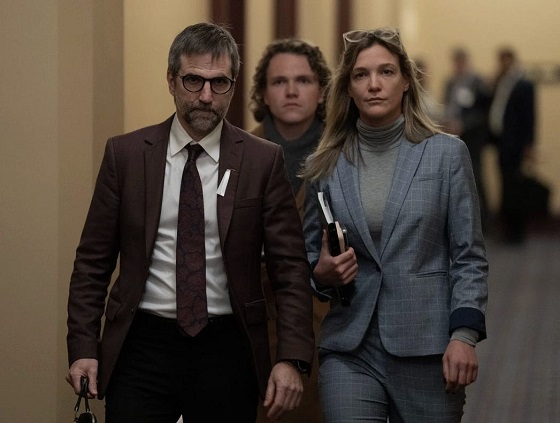
Steven Guilbeault, Heritage Minister and Quebec lieutenant, leaves cabinet this week with his chief of staff, Ann-Clara Vaillancourt. He resigned on Thursday.
Steven Guilbeault’s resignation will help end a decade of stagnation and lost investment.
Steven Guilbeault’s resignation will come as no surprise to Mark Carney – save, perhaps, for the fact that it took so long.
The former environment minister quit on Thursday evening, after the prime minister unveiled his memorandum of understanding with Alberta premier, Danielle Smith. That deal is aimed at creating the conditions to build an oil pipeline to the West Coast and encouraging new investment in the province’s natural gas electricity generation sector. In doing so, Carney cancelled the oil and gas emissions cap and the clean electricity regulations that Guilbeault had been instrumental in constructing and imposing.
Fly Straight is a reader-supported publication.
To receive new posts and support my work, consider becoming a free or paid subscriber.
The former environmental activist couldn’t accept the continued expansion of fossil fuel production and so walked away after six years in cabinet.
In his resignation statement, he said he strongly opposes the MOU with Alberta because it was signed without consultation with the province of British Columbia and First Nations.
He said removing the moratorium on oil tankers off the West Coast would increase the risk of accidents and suspending clean electricity regulations, which blocked new gas generation, will result in an “upwards emissions trajectory”.
In particular, he was upset about the expansion of federal tax credits to encourage enhanced oil recovery, a carbon storage technology that captures carbon dioxide from industrial emitters and injects it back underground. Guilbeault considered this a direct subsidy for oil production – a business he said he hoped the government was exiting.
In a Twitter post, I called Guilbeault “anti-Pathways” – that is, opposed to the giant carbon capture and storage development that Carney views as crucial to offsetting the building of a new pipeline.
One of Guilbeault’s defenders said he is not anti-Pathways, and that, in fact, he was part of the trifecta, along with Chrystia Freeland and Jonathan Wilkinson, who negotiated the details on the investment tax credit “that will pay 50 percent of the cost of construction to a bunch of rich oil companies”. To me, that showed Guilbeault’s (and his supporters) true colours. If he wasn’t anti-Pathways, he certainly wasn’t pro.
When he said he would back Carney’s leadership bid in January, I wrote that it was an endorsement the aspiring Liberal leader could do without.
The now-prime minister always had in his mind a plan to build, including fossil fuel production, offset by technology adoption and a stronger industrial carbon price in Alberta. Even then, he made clear he was prepared to be pragmatic in a time of crisis.
Guilbeault’s plan was to regulate the industry to death.
It was always going to end badly but, as Carney told me last winter, Guilbeault provided crucial support on the ground in Quebec and any politician’s first responsibility is to win.
Guilbeault should be respected for his deep convictions on climate change and his commitment to leaving a better world to our children.
But he should never have been allowed to dictate environmental policy in this country. He refused to view natural gas as a bridging fuel in the energy transition in a country that has reserves of a resource that will, at current production levels, last 300 years.
He made clear his lack of enthusiasm for small modular nuclear reactors and new road-building.
And he pushed an oil and gas emissions cap that he knew would hit production levels and further (if that were possible) alienate Western Canadians.
His departure – and that of Freeland – give Carney scope to pursue what he hopes is a transformative response to not only Donald Trump, but to federal policies that amounted to driving with the handbrake on. Carney has made his intent clear – to optimize Canada’s resource wealth, while attempting to minimize emissions.
Five years ago, Trudeau was nearly tarred and feathered during a visit to Calgary; Carney received two standing ovations in the same town yesterday.
For too many years under the Trudeau/Freeland duopoly the plan was to redistribute the pie. Now it is clearly about wealth creation.
In my National Post columns, I have been scathing about some of the things the Carney government has done, as is appropriate for someone whose prime directive is the public interest. The decisions to recognize a Palestinian state; apologize to Trump for the Ontario “Ronald Reagan” ad; announce a bunch of major projects that were so advanced they didn’t need to be fast-tracked; split spending into the confusing binary of “operating” or “capital”; and visit the United Arab Emirates on a trade mission in the midst of a genocide in Sudan that the Emiratis had helped to fund were all, to me, missteps.
But, so far, Carney has got the big things right. The budget and this MOU are auspicious moves aimed at ending a decade of stagnation and lost investment.
There is a new mood of anticipation in the country, summed up in the S&P/TSX index, which hit record highs this week on the back of energy and mining stocks. Canadian pension funds are taking another look at the domestic market, intrigued by the prospect of investing in the potential privatization of airports, for example.
Canada is feeling better. There has been a shift in the mindset from saying no to everything to being open to removing barriers that stop the private sector from investing.
Success and prosperity are not guaranteed. But stagnation need not be either.
Fly Straight is a reader-supported publication.
To receive new posts and support my work, consider becoming a free or paid subscriber.
Alberta
Alberta can’t fix its deficits with oil money: Lennie Kaplan

This article supplied by Troy Media.
Alberta is banking on oil to erase rising deficits, but the province’s budget can’t hold without major fiscal changes
Alberta is heading for a fiscal cliff, and no amount of oil revenue will save it this time.
The province is facing ballooning deficits, rising debt and an addiction to resource revenues that rise and fall with global markets. As Budget 2026 consultations begin, the government is gambling on oil prices to balance the books again. That gamble is failing. Alberta is already staring down multibillion-dollar shortfalls.
I estimate the province will run deficits of $7.7 billion in 2025-26, $8.8 billion in 2026-27 and $7.5 billion in 2027-28. If nothing changes, debt will climb from $85.2 billion to $112.3 billion in just three years. That is an increase of more than $27 billion, and it is entirely avoidable.
These numbers come from my latest fiscal analysis, completed at the end of October. I used conservative assumptions: oil prices at US$62 to US$67 per barrel over the next three years. Expenses are expected to keep growing faster than inflation and population. I also requested Alberta’s five-year internal fiscal projections through access to information but Treasury Board and Finance refused to release them. Those forecasts exist, but Albertans have not been allowed to see them.
Alberta has been running structural deficits for years, even during boom times. That is because it spends more than it brings in, counting on oil royalties to fill the gap. No other province leans this hard on non-renewable resource revenue. It is volatile. It is risky. And it is getting worse.
That is what makes Premier Danielle Smith’s recent Financial Post column so striking. She effectively admitted that any path to a balanced budget depends on doubling Alberta’s oil production by 2035. That is not a plan. It is a fantasy. It relies on global markets, pipeline expansions and long-term forecasts that rarely hold. It puts taxpayers on the hook for a commodity cycle the province does not control.
I have long supported Alberta’s oil and gas industry. But I will call out any government that leans on inflated projections to justify bad fiscal choices.
Just three years ago, Alberta needed oil at US$70 to balance the budget. Now it needs US$74 in 2025-26, US$76.35 in 2026-27 and US$77.50 in 2027-28. That bar keeps rising. A single US$1 drop in the oil price will soon cost Alberta $750 million a year. By the end of the decade, that figure could reach $1 billion. That is not a cushion. It is a cliff edge.
Even if the government had pulled in $13 billion per year in oil revenue over the last four years, it still would have run deficits. The real problem is spending. Since 2021, operating spending, excluding COVID-19 relief, has jumped by $15.5 billion, or 31 per cent. That is nearly eight per cent per year. For comparison, during the last four years under premiers Ed Stelmach and Alison Redford, spending went up 6.9 per cent annually.
This is not a revenue problem. It is a spending problem, papered over with oil booms. Pretending Alberta can keep expanding health care, education and social services on the back of unpredictable oil money is reckless. Do we really want our schools and hospitals held hostage to oil prices and OPEC?
The solution was laid out decades ago. Oil royalties should be saved off the top, not dumped into general revenue. That is what Premier Peter Lougheed understood when he created the Alberta Heritage Savings Trust Fund in 1976. It is what Premier Ralph Klein did when he cut spending and paid down debt in the 1990s. Alberta used to treat oil as a bonus. Now it treats it as a crutch.
With debt climbing and deficits baked in, Alberta is out of time. I have previously laid out detailed solutions. But here is where the government should start.
First, transparency. Albertans deserve a full three-year fiscal update by the end of November. That includes real numbers on revenue, expenses, debt and deficits. The government must also reinstate the legal requirement for a mid-year economic and fiscal report. No more hiding the ball.
Second, a real plan. Not projections based on hope, but a balanced three-year budget that can survive oil prices dropping below forecast. That plan should be part of Budget 2026 consultations.
Third, long-term discipline. Alberta needs a fiscal sustainability framework, backed by a public long-term report released before year-end.
Because if this government will not take responsibility, the next oil shock will.
Lennie Kaplan is a former senior manager in the fiscal and economic policy division of Alberta’s Ministry of Treasury Board and Finance, where, among other duties, he examined best practices in fiscal frameworks, program reviews and savings strategies for non-renewable resource revenues. In 2012, he won a Corporate Values Award in TB&F for his work on Alberta’s fiscal framework review. In 2019, Mr. Kaplan served as executive director to the MacKinnon Panel on Alberta’s finances—a government-appointed panel tasked with reviewing Alberta’s spending and recommending reforms.
-
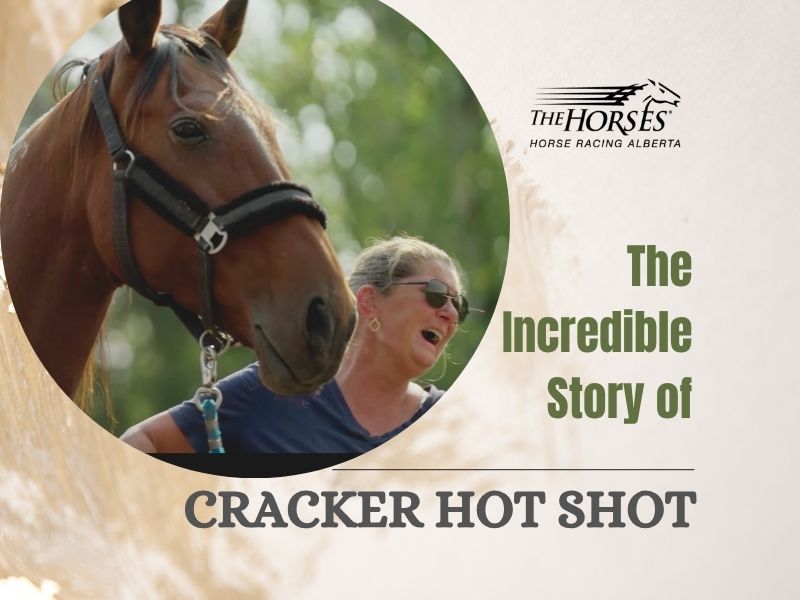
 Alberta2 days ago
Alberta2 days agoFrom Underdog to Top Broodmare
-
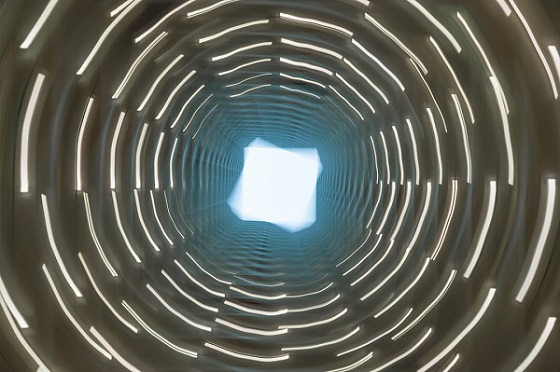
 Opinion23 hours ago
Opinion23 hours agoLandmark 2025 Study Says Near-Death Experiences Can’t Be Explained Away
-

 Focal Points1 day ago
Focal Points1 day agoSTUDY: TikTok, Instagram, and YouTube Shorts Induce Measurable “Brain Rot”
-
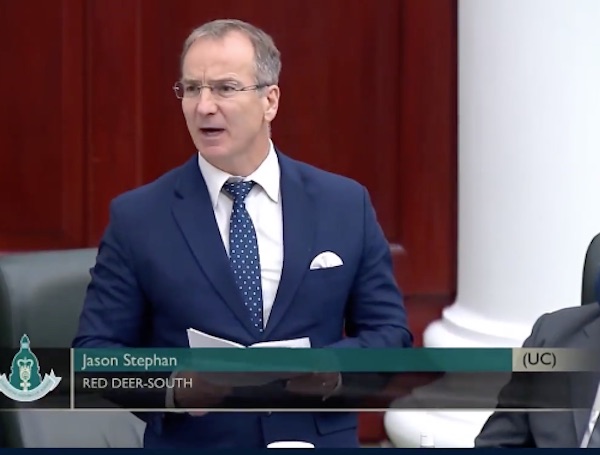
 Alberta22 hours ago
Alberta22 hours agoRed Deer’s Jason Stephan calls for citizen-led referendum on late-term abortion ban in Alberta
-

 Health1 day ago
Health1 day agoTens of thousands are dying on waiting lists following decades of media reluctance to debate healthcare
-

 Indigenous21 hours ago
Indigenous21 hours agoIndigenous activist wins landmark court ruling for financial transparency
-

 Business20 hours ago
Business20 hours agoMan overboard as HMCS Carney lists to the right
-

 Alberta21 hours ago
Alberta21 hours agoCarney forces Alberta to pay a steep price for the West Coast Pipeline MOU





